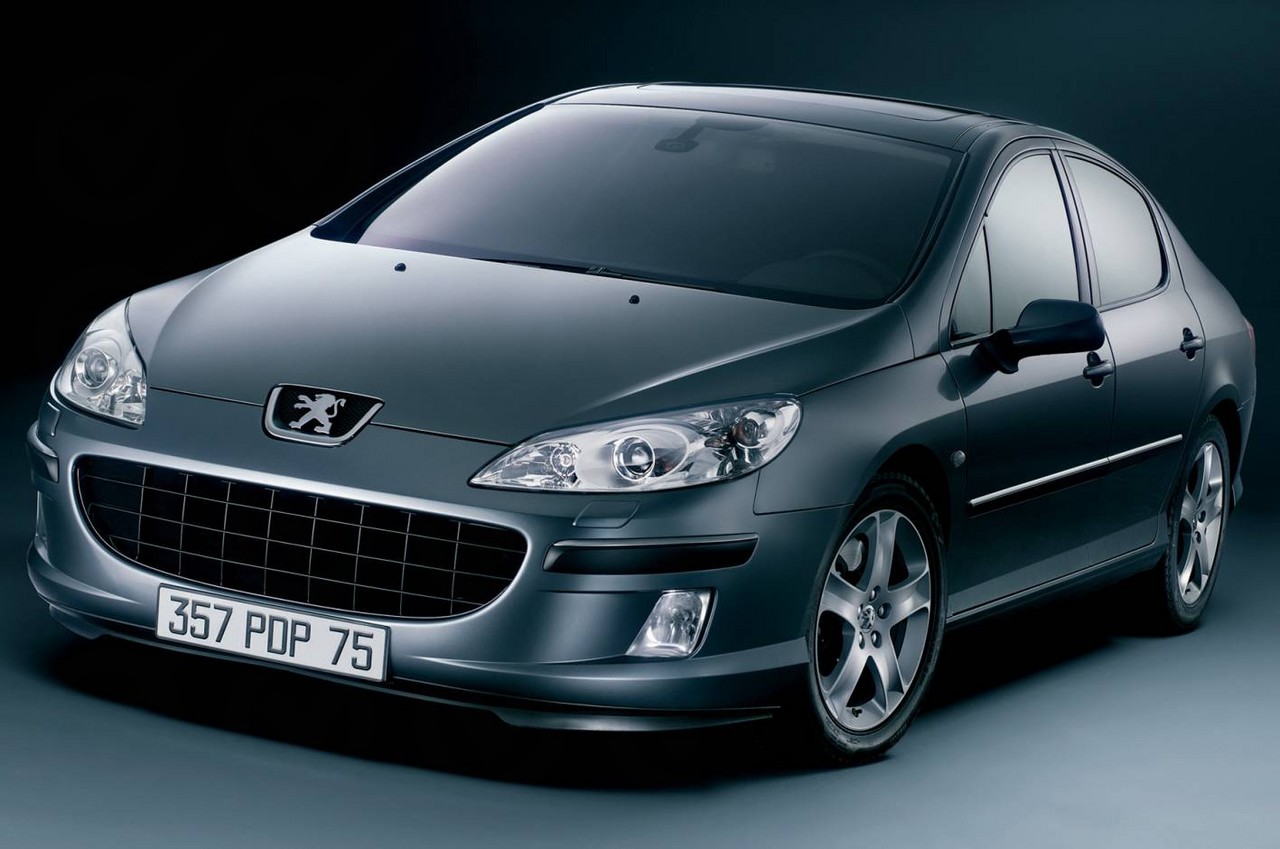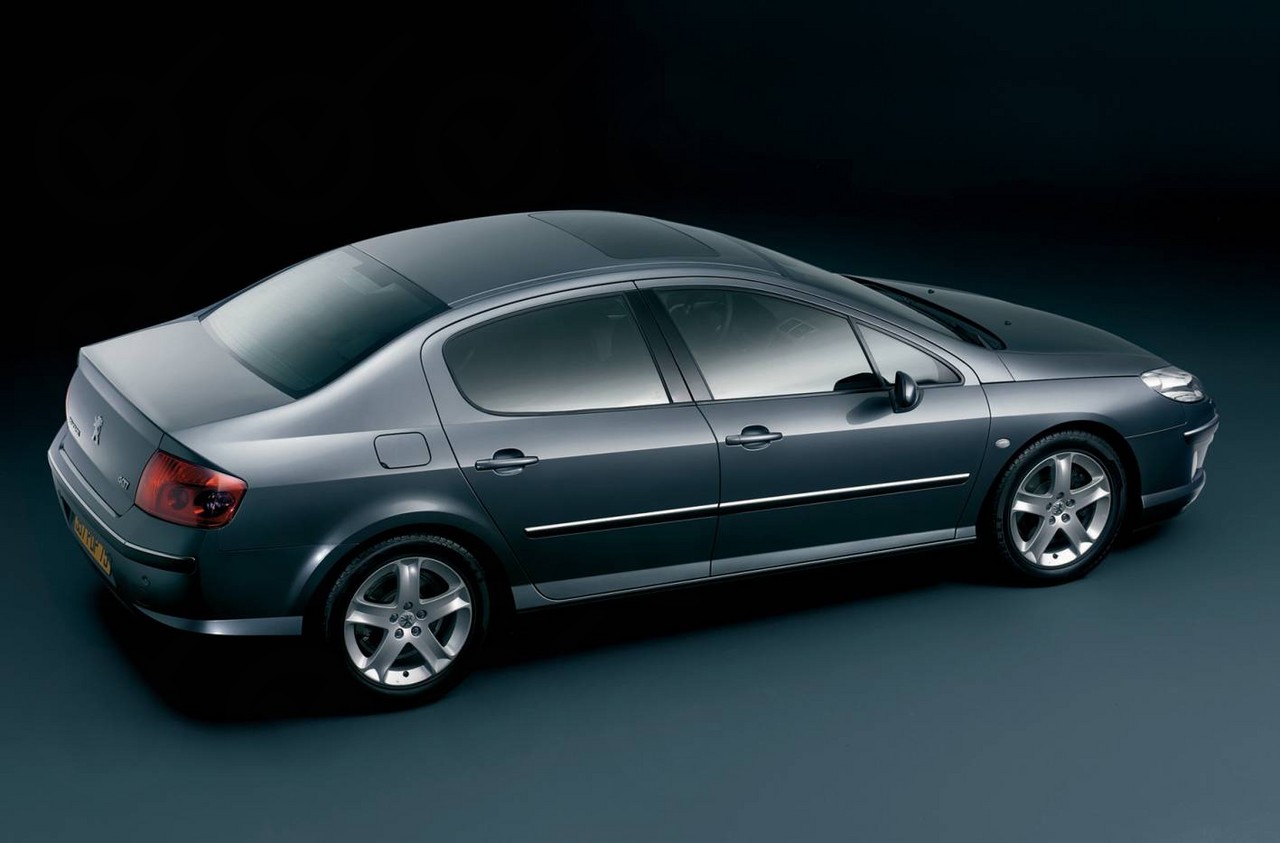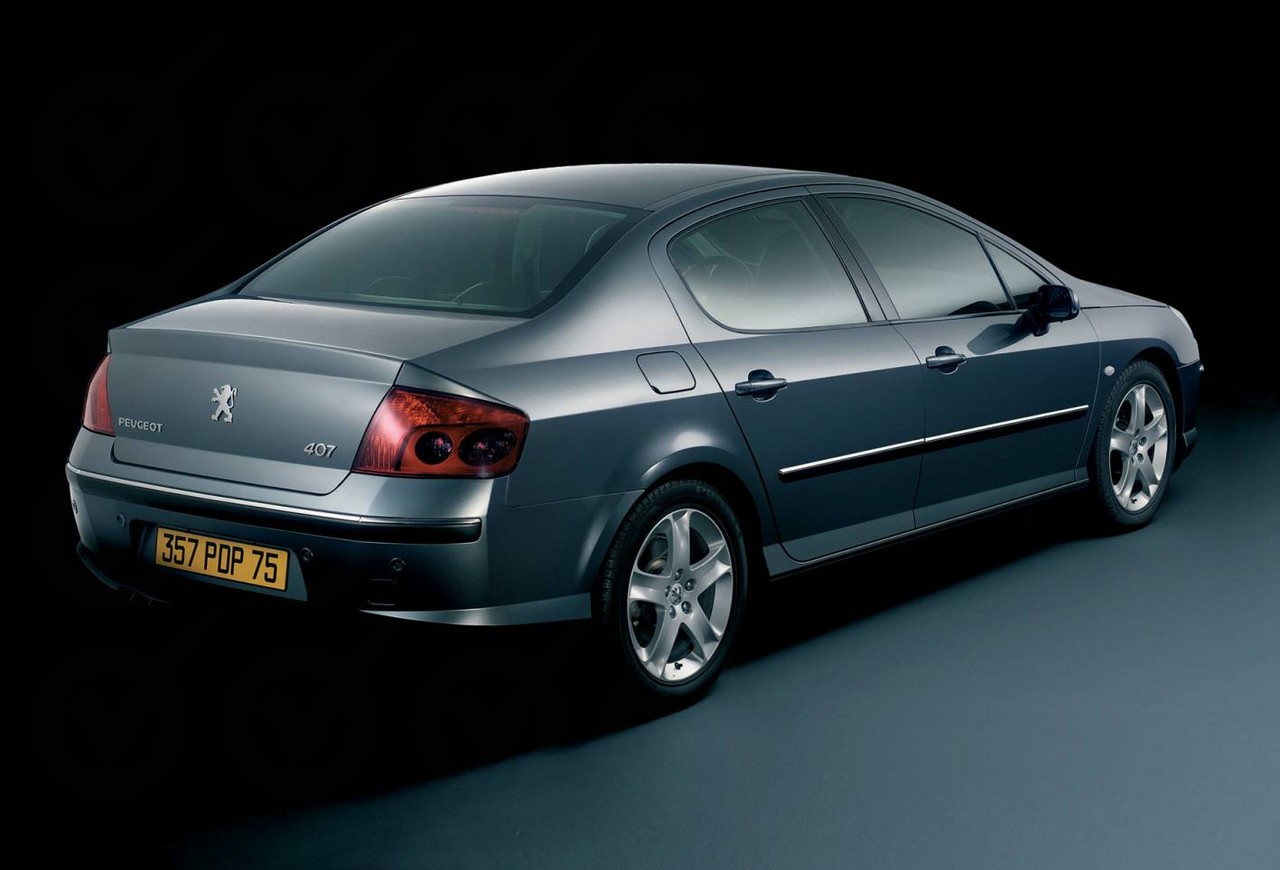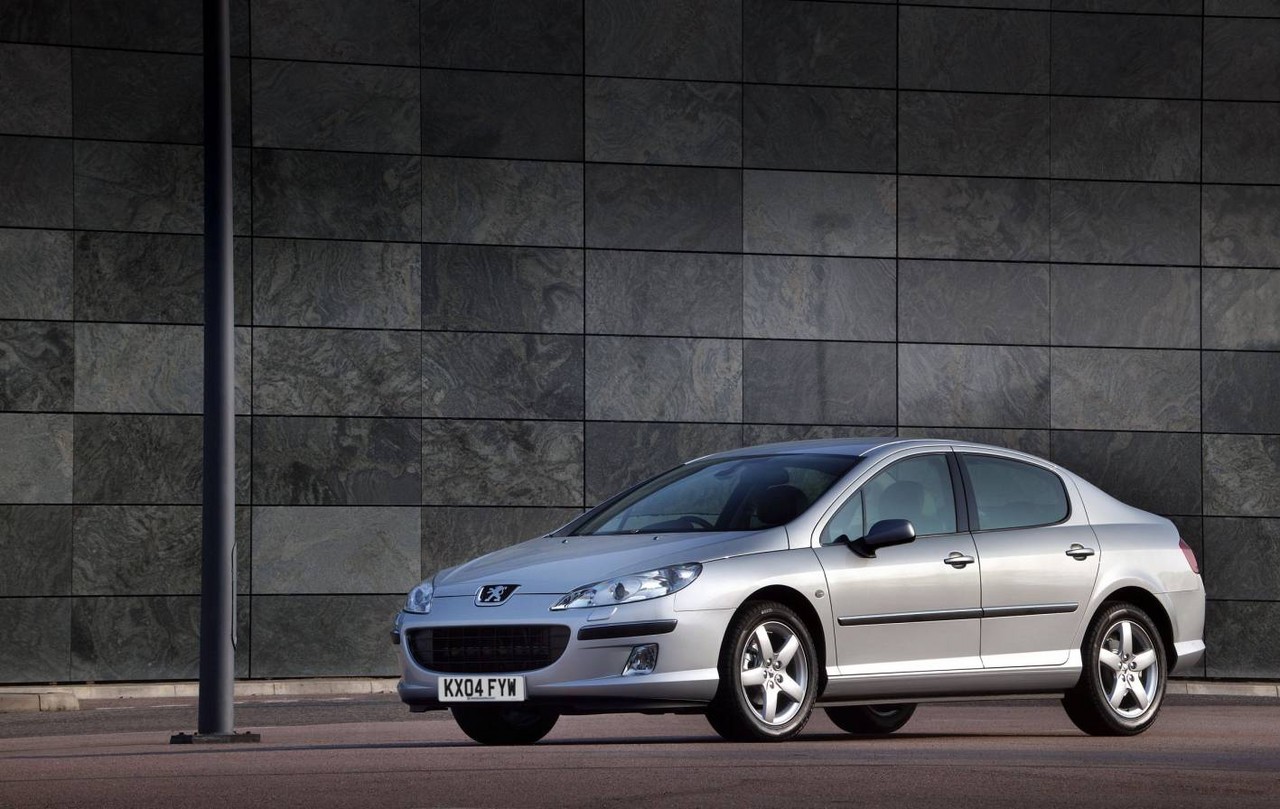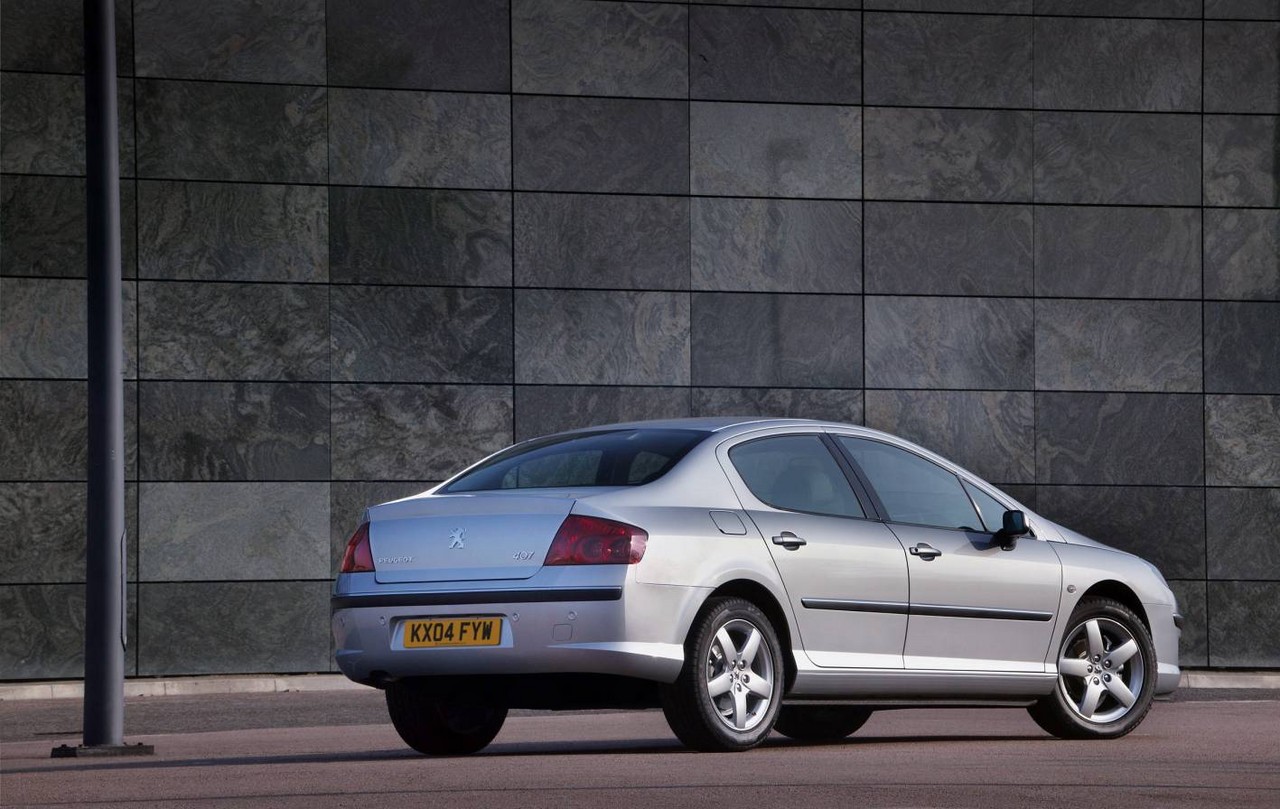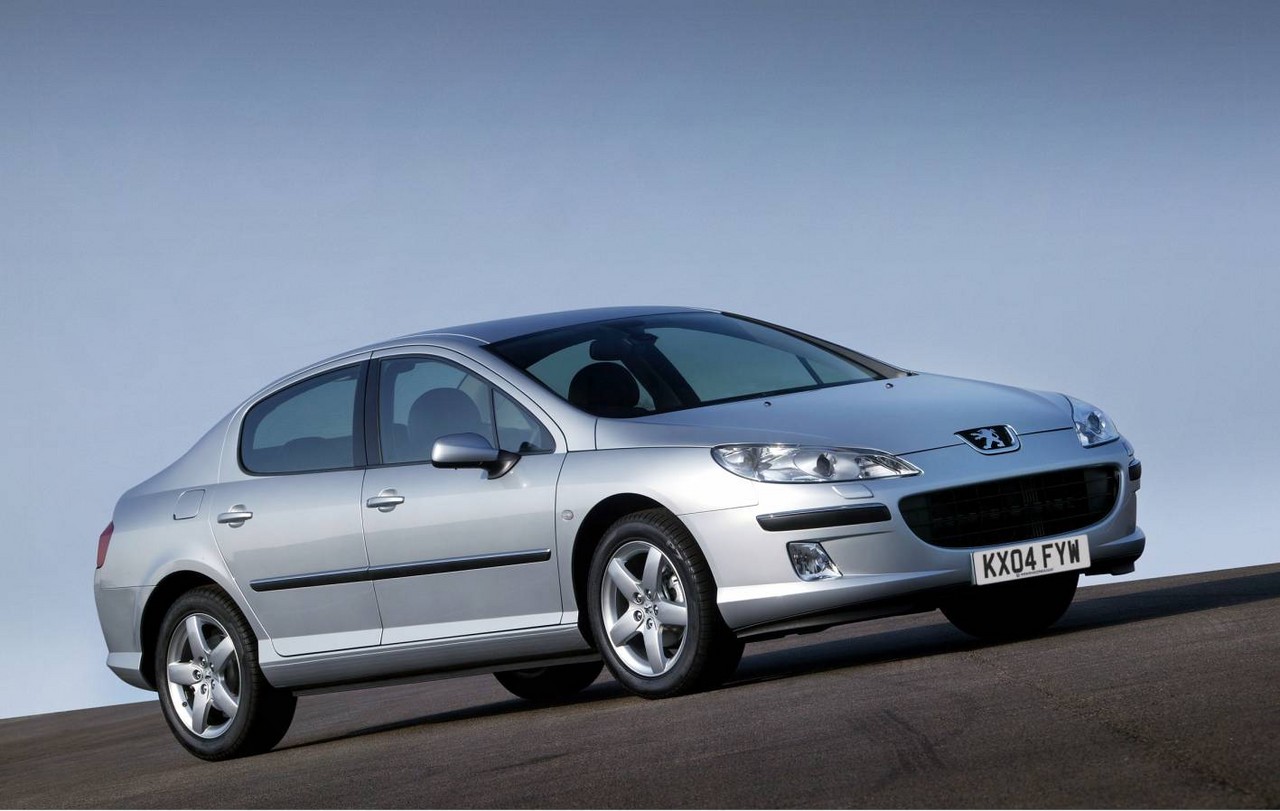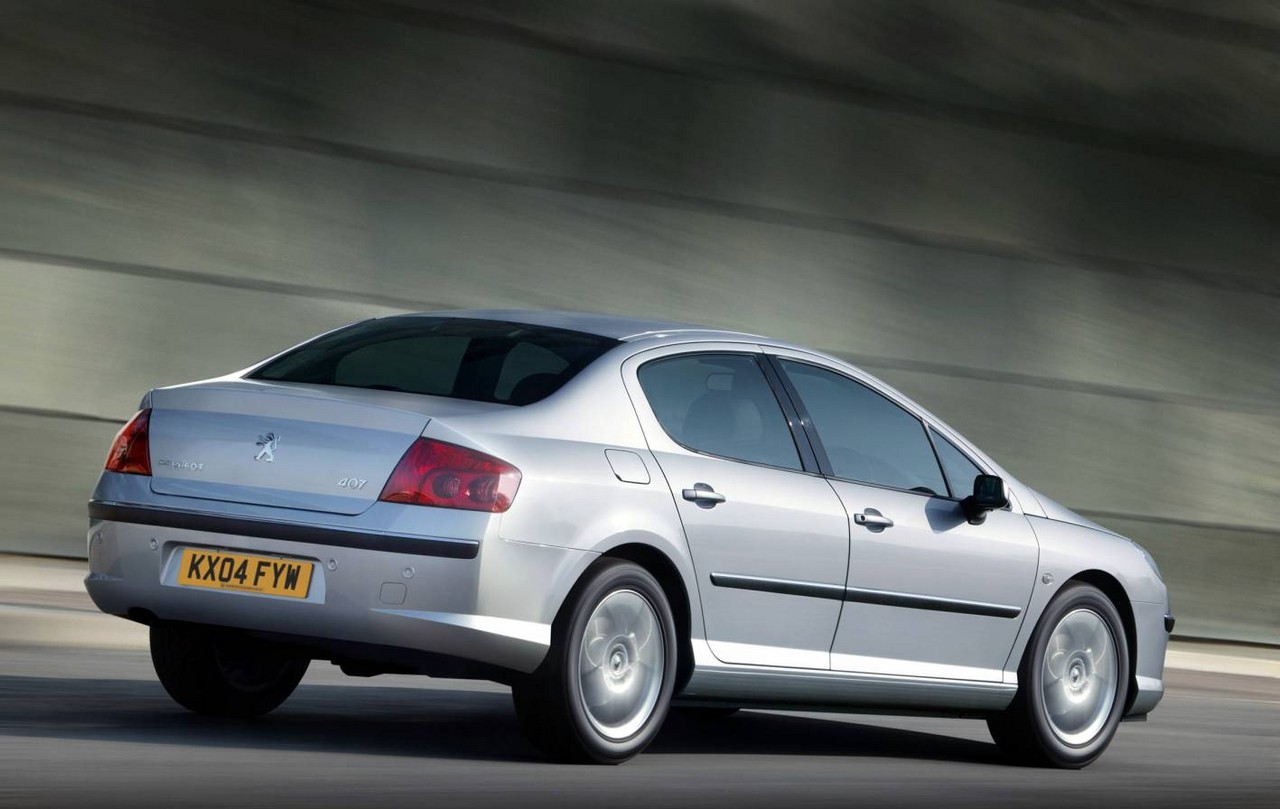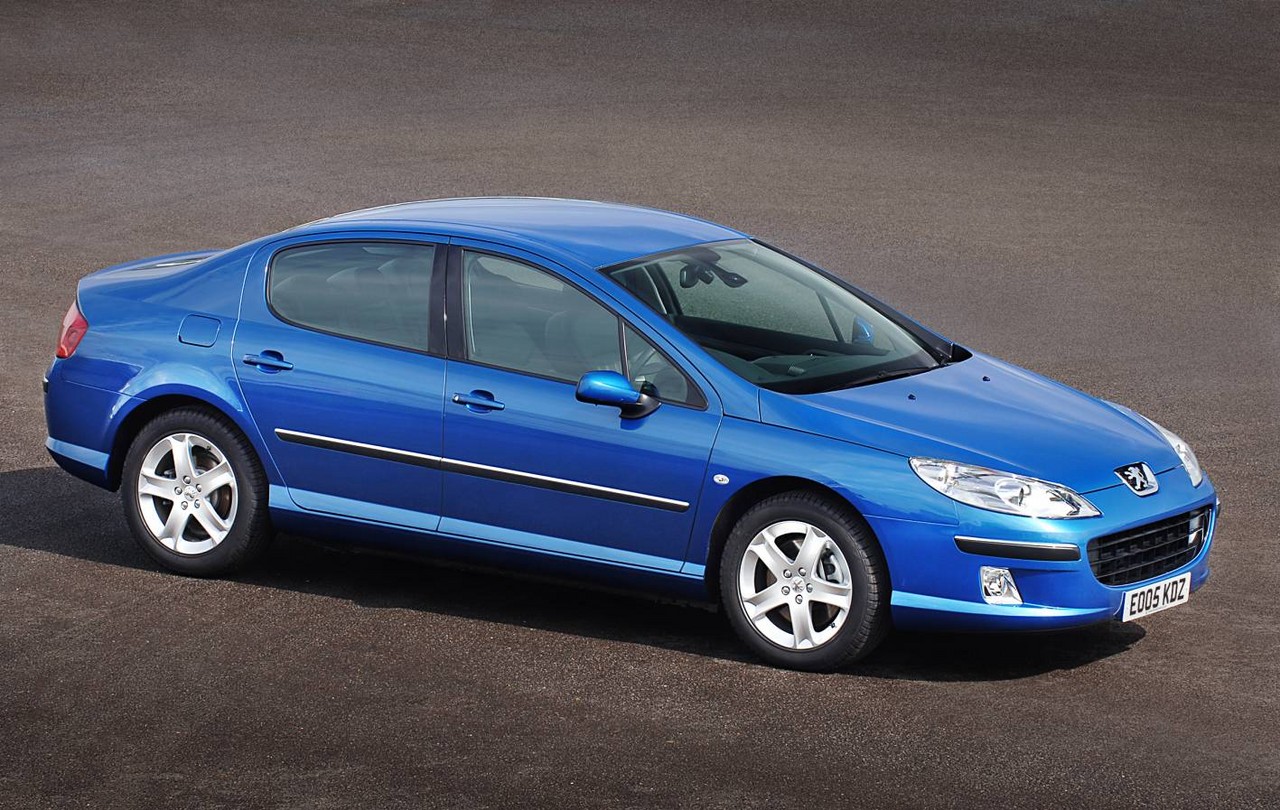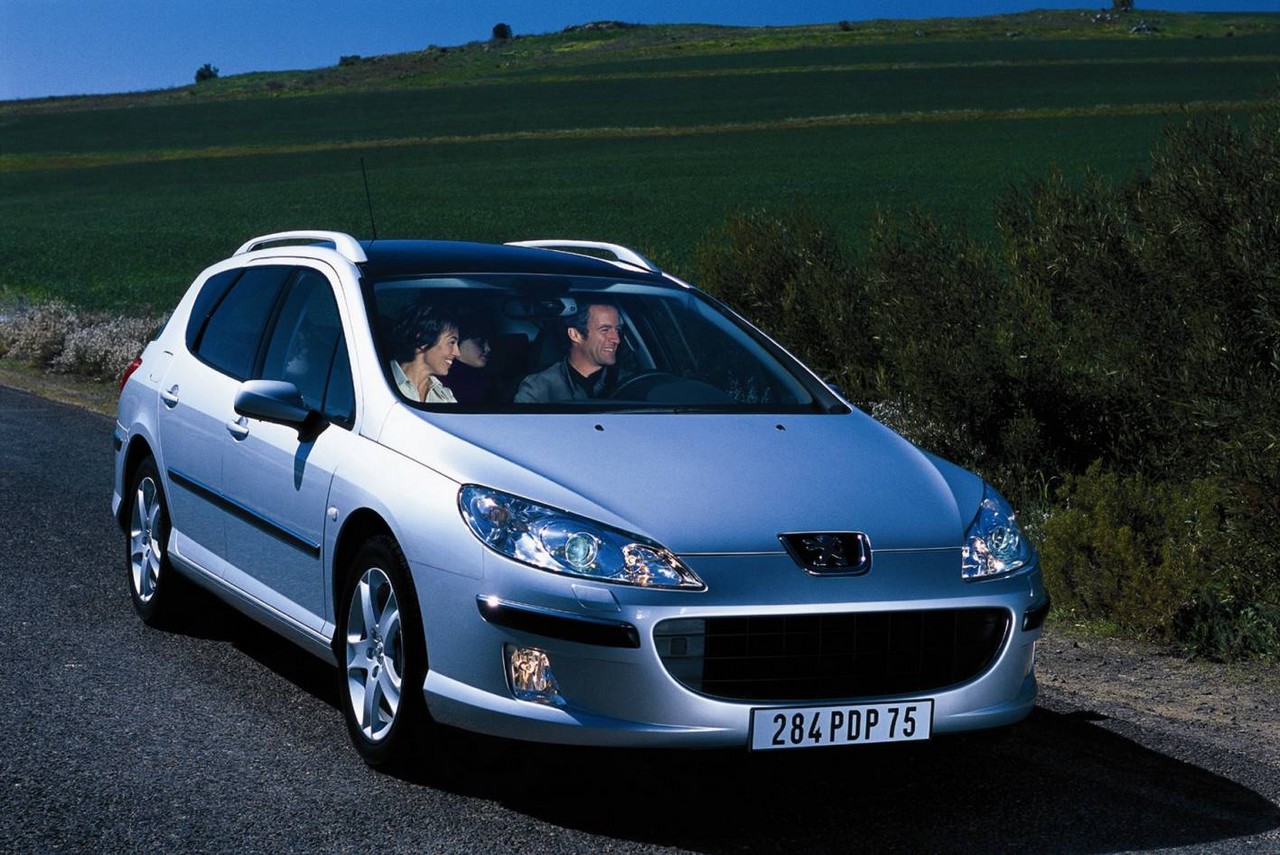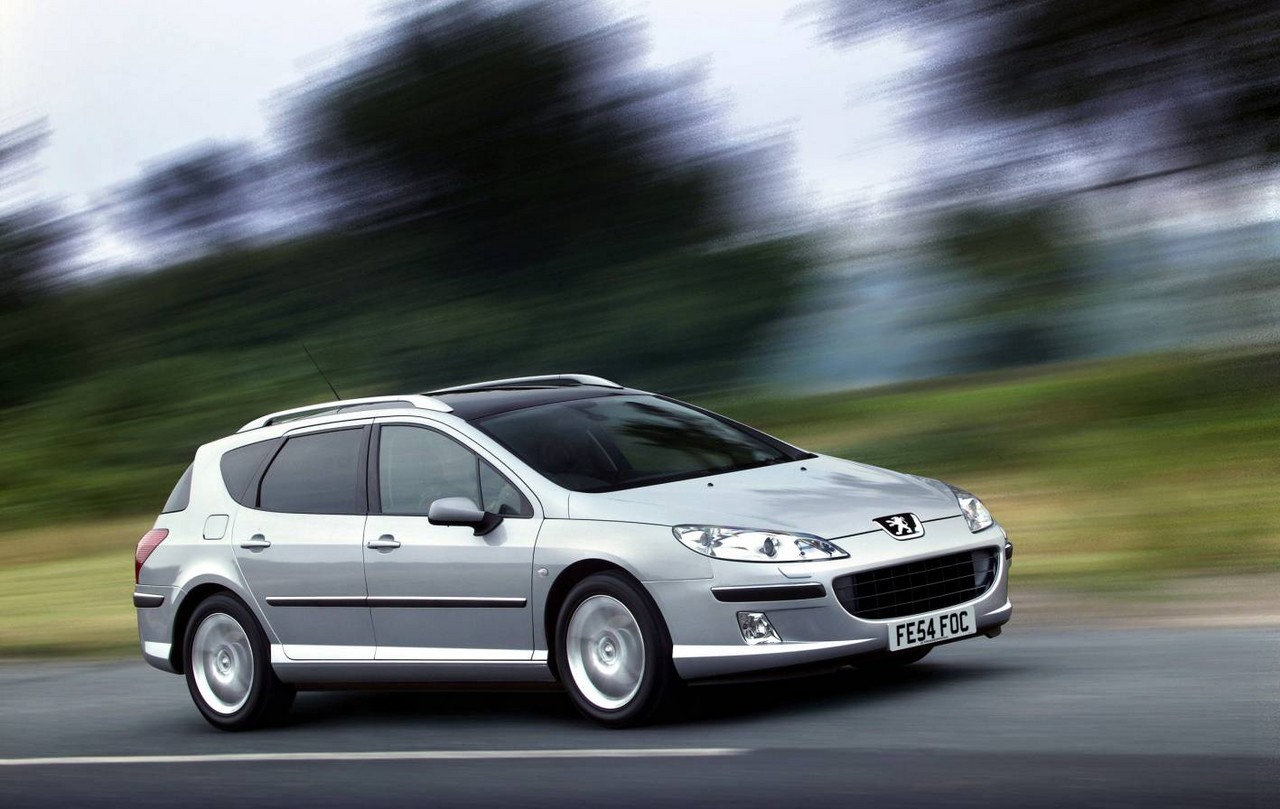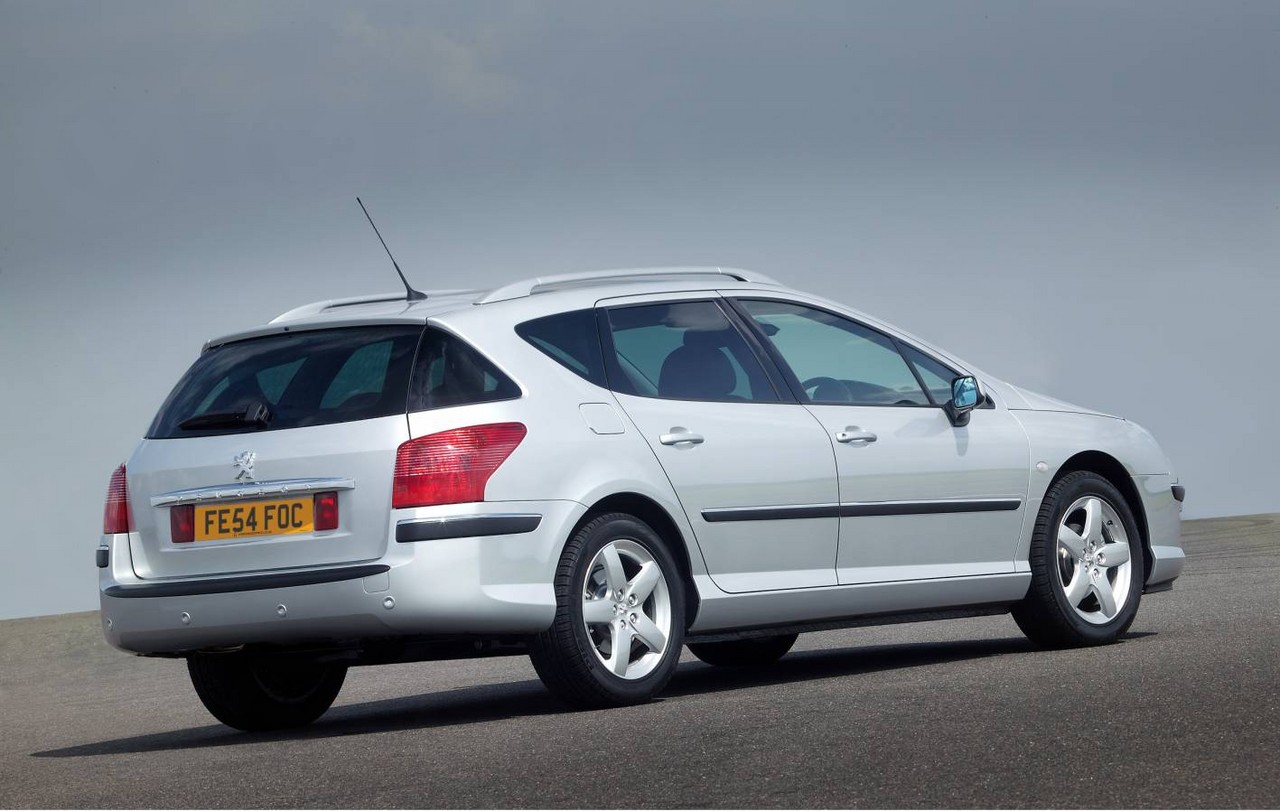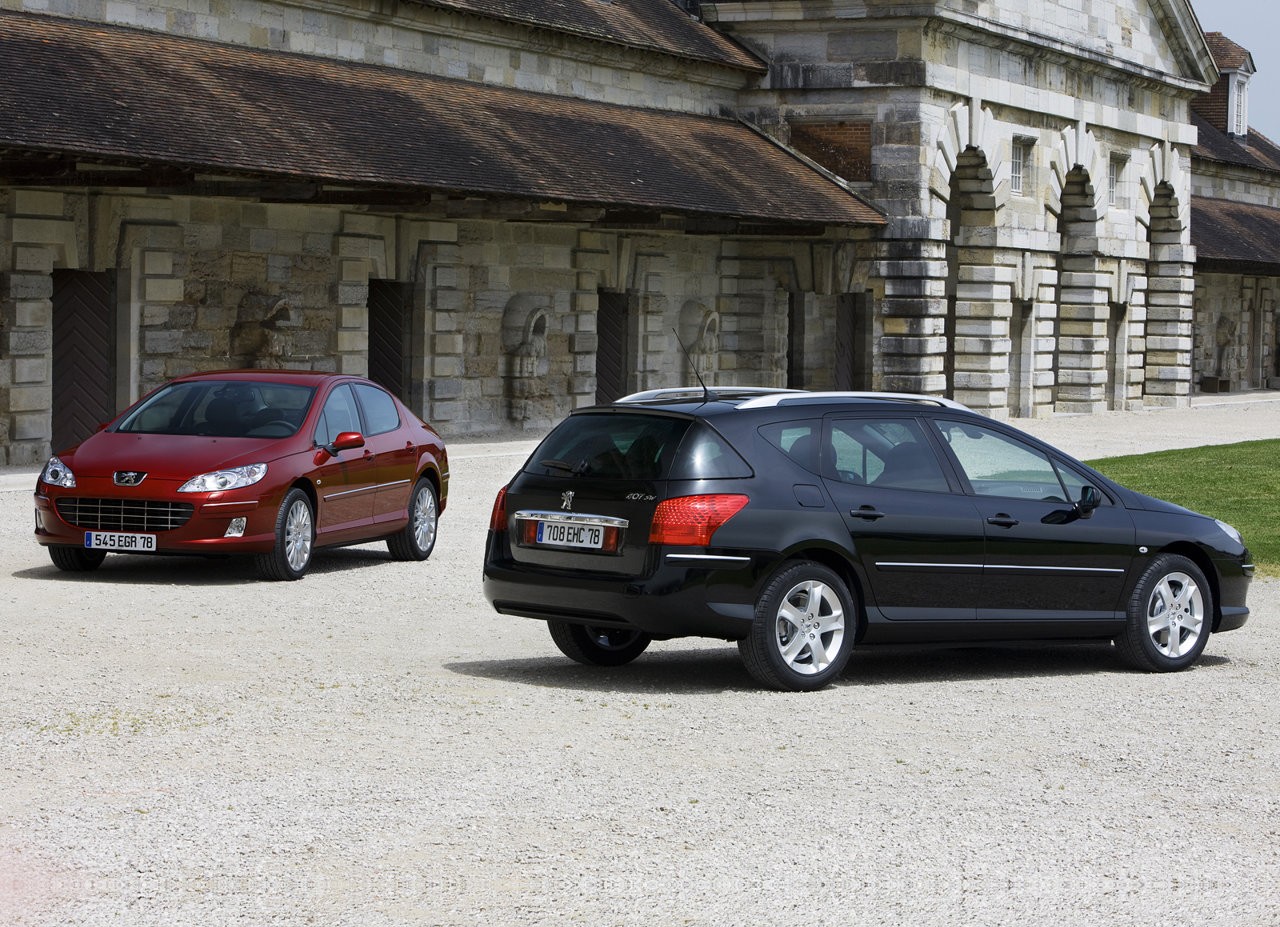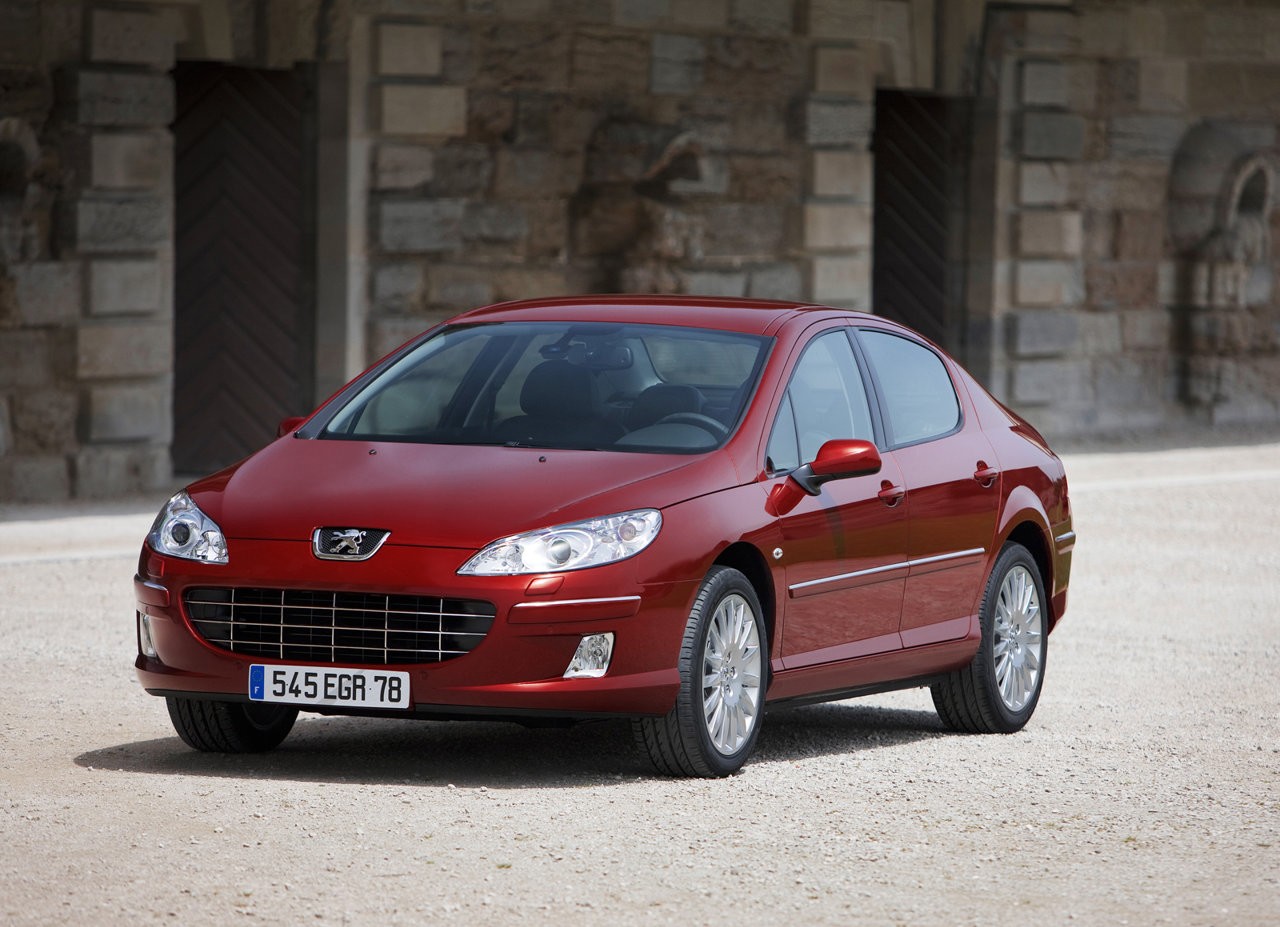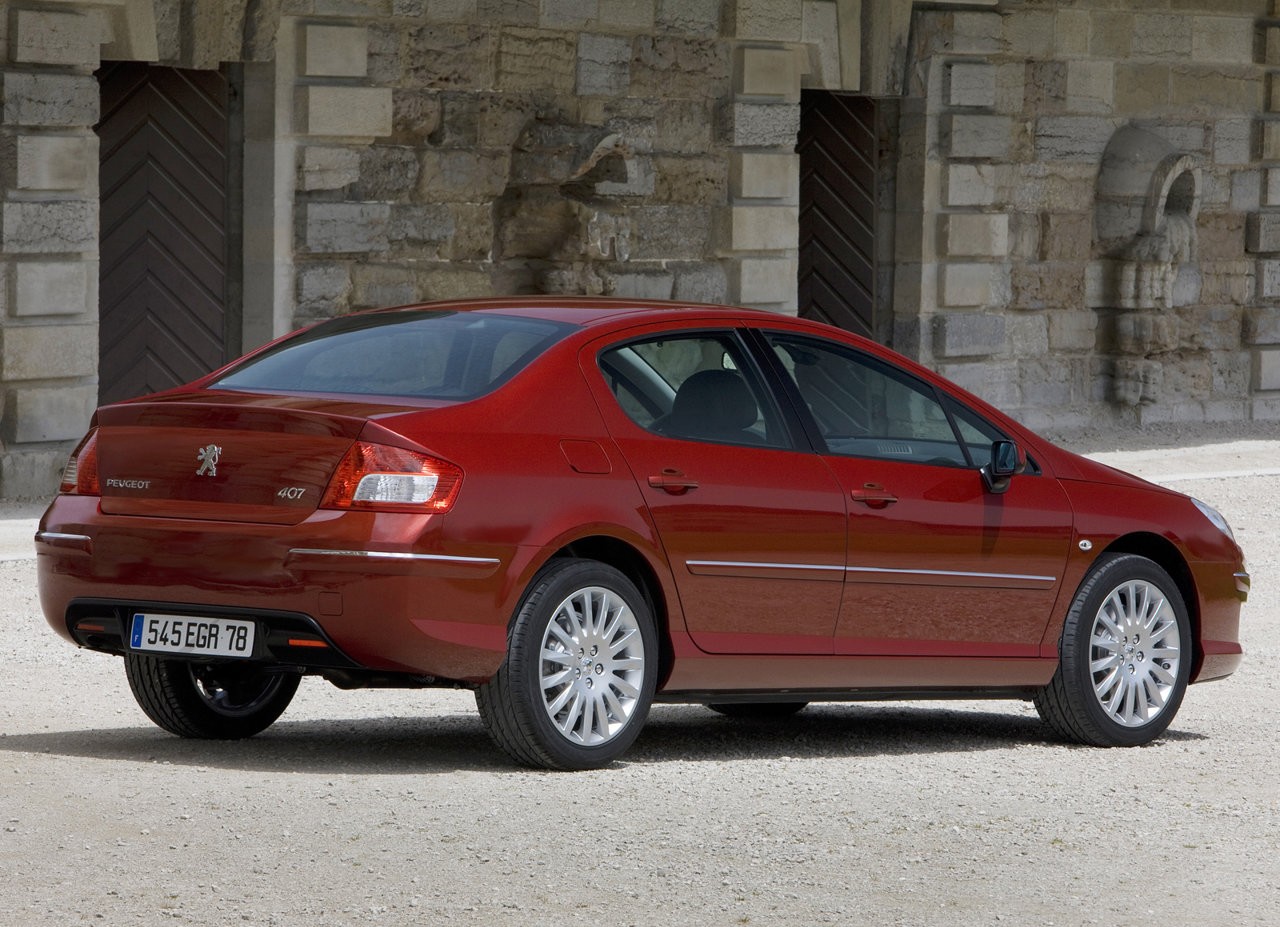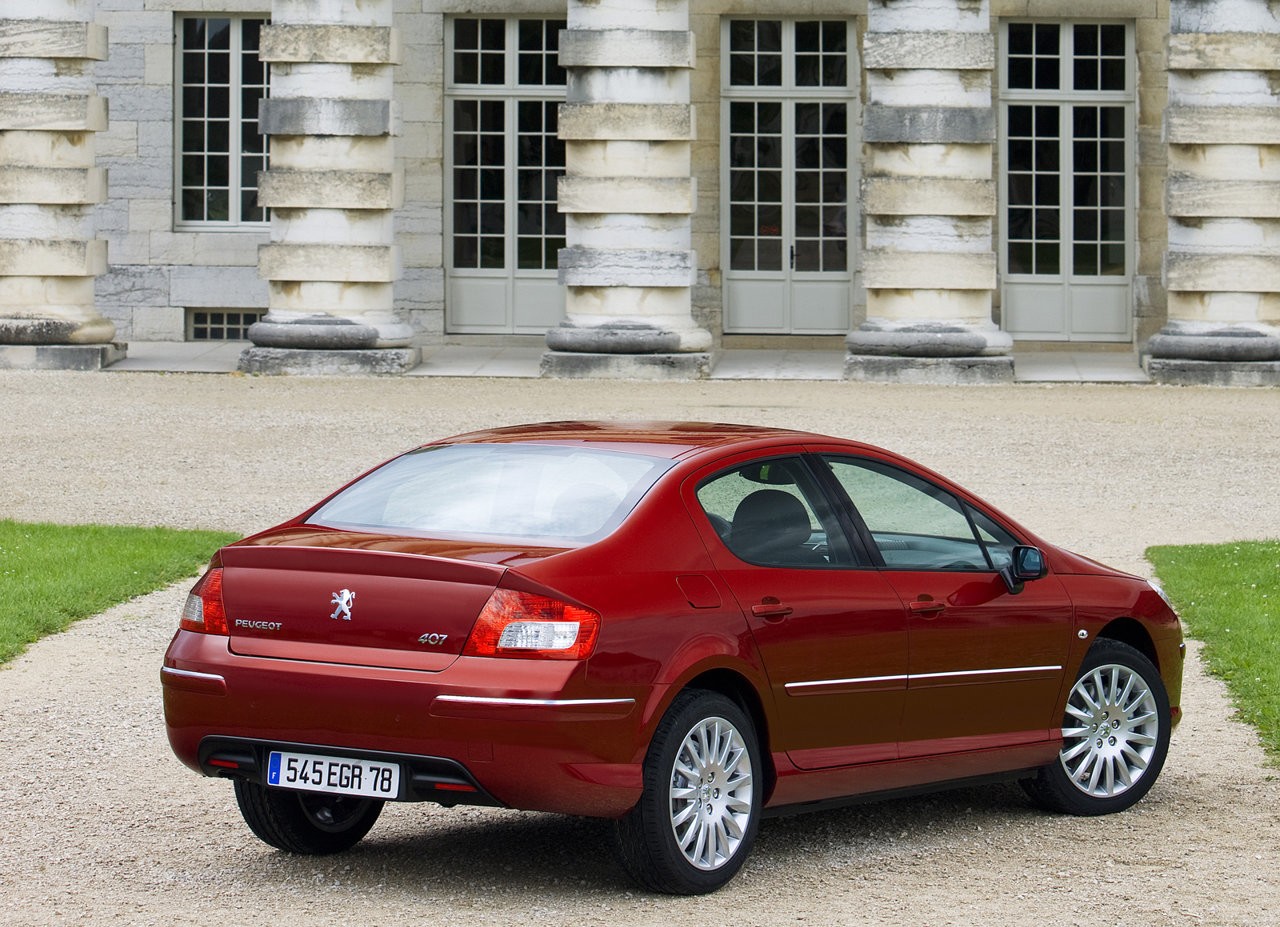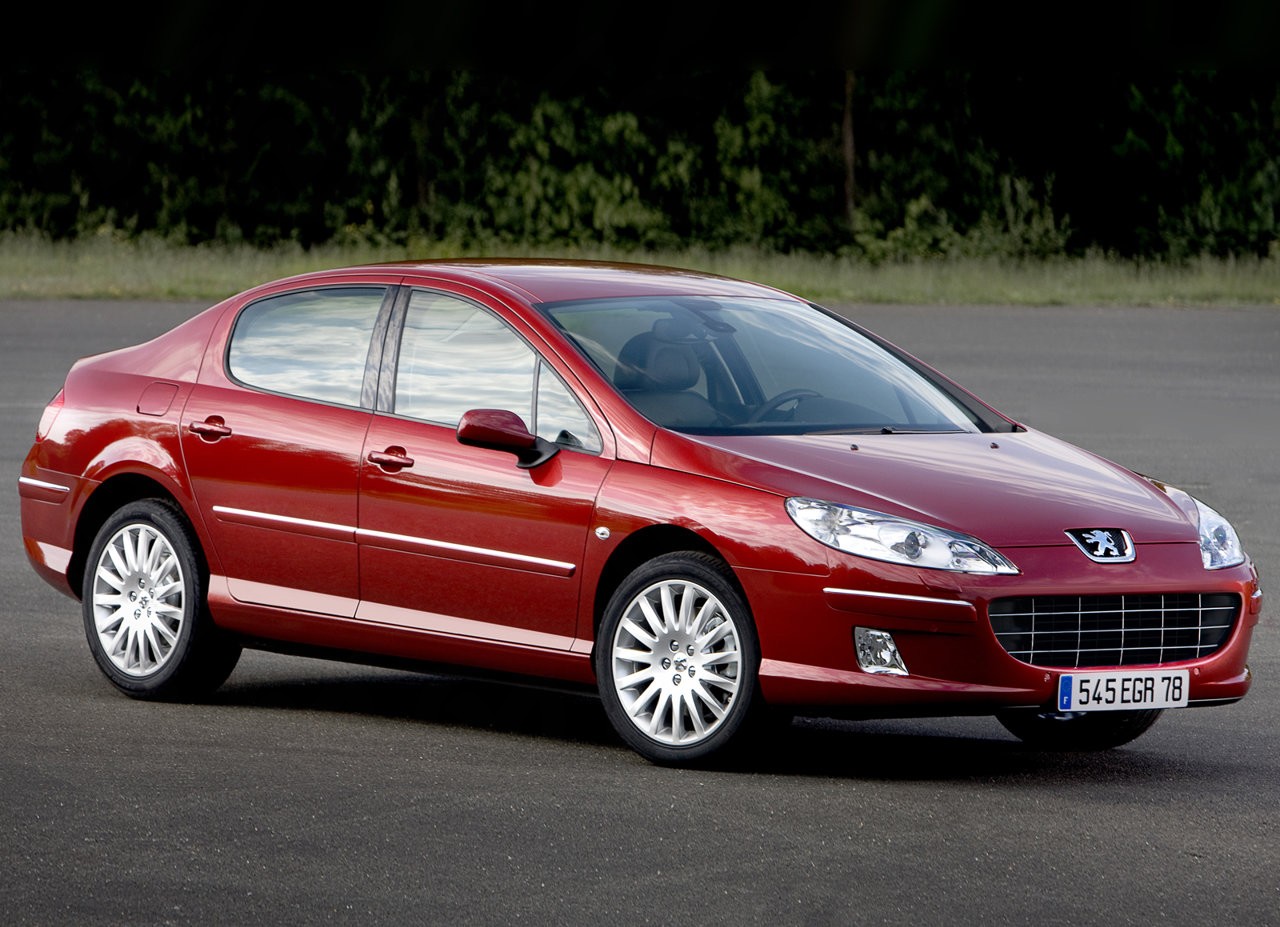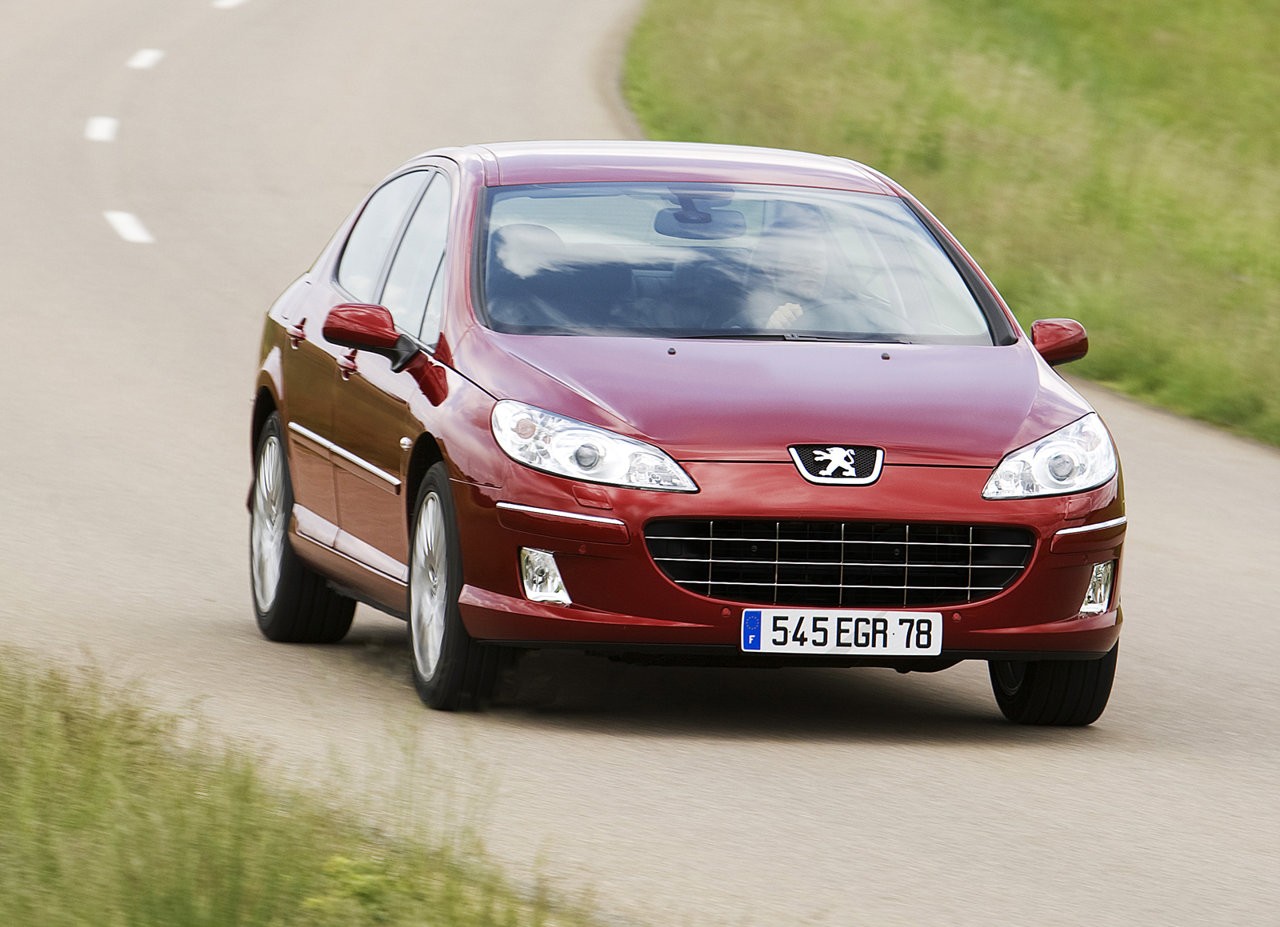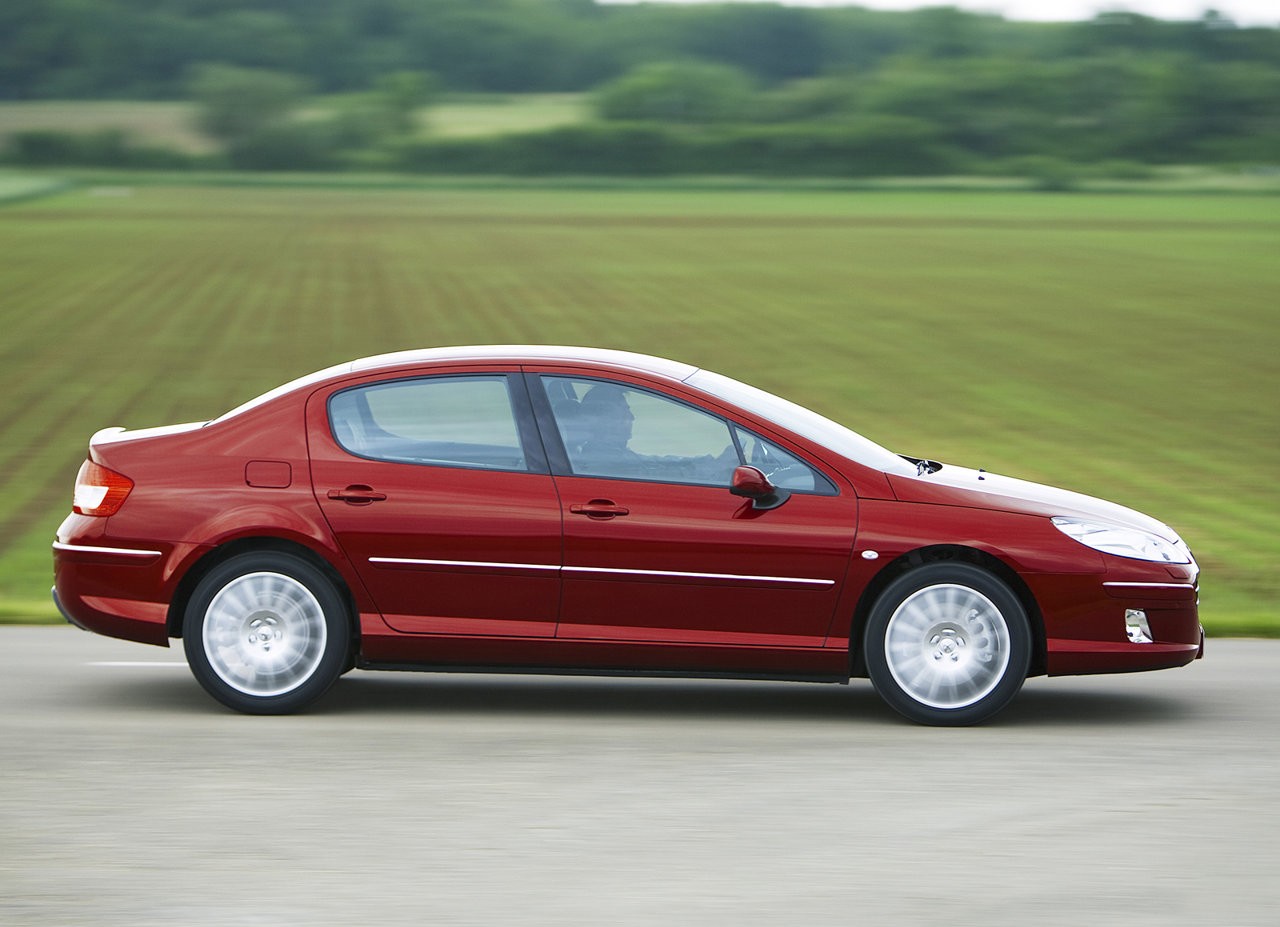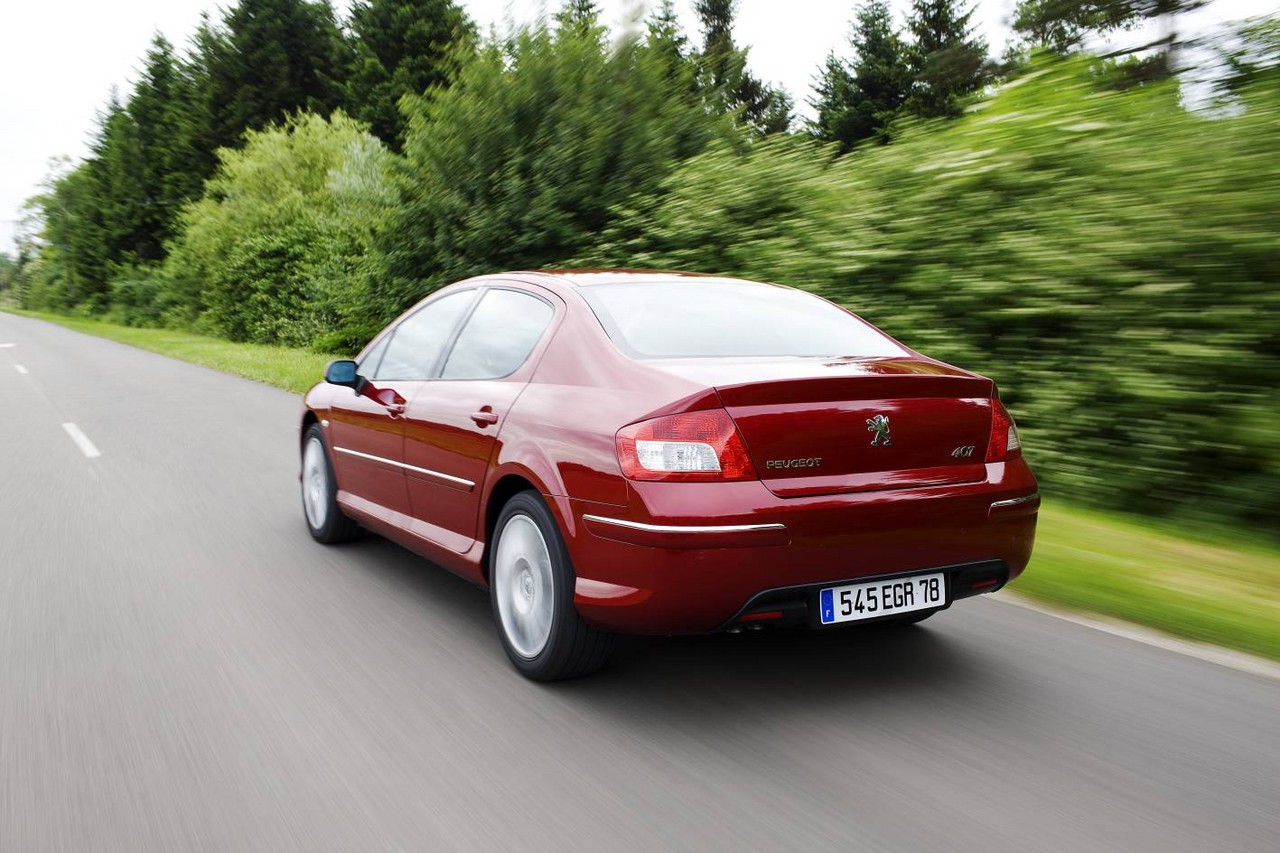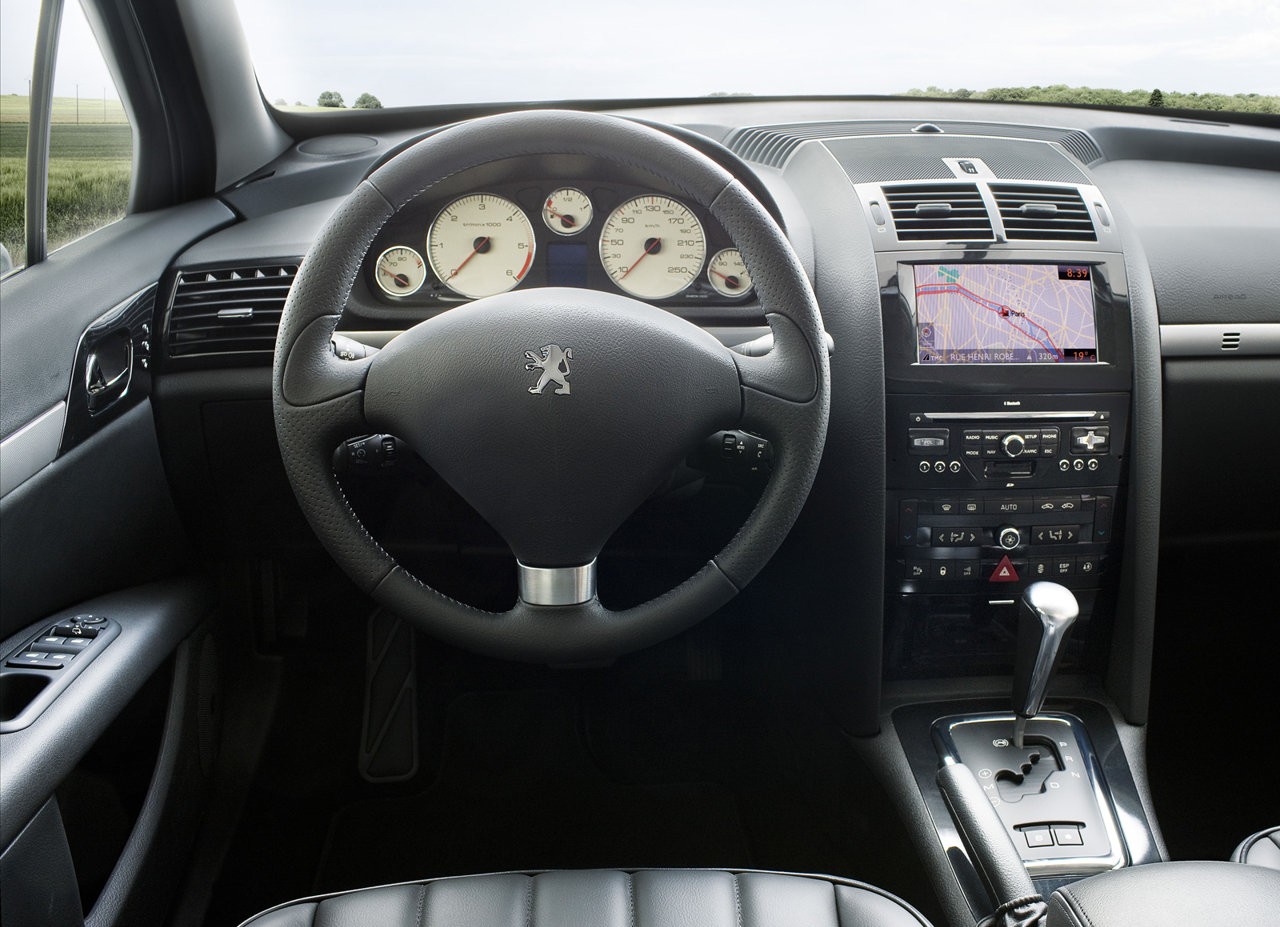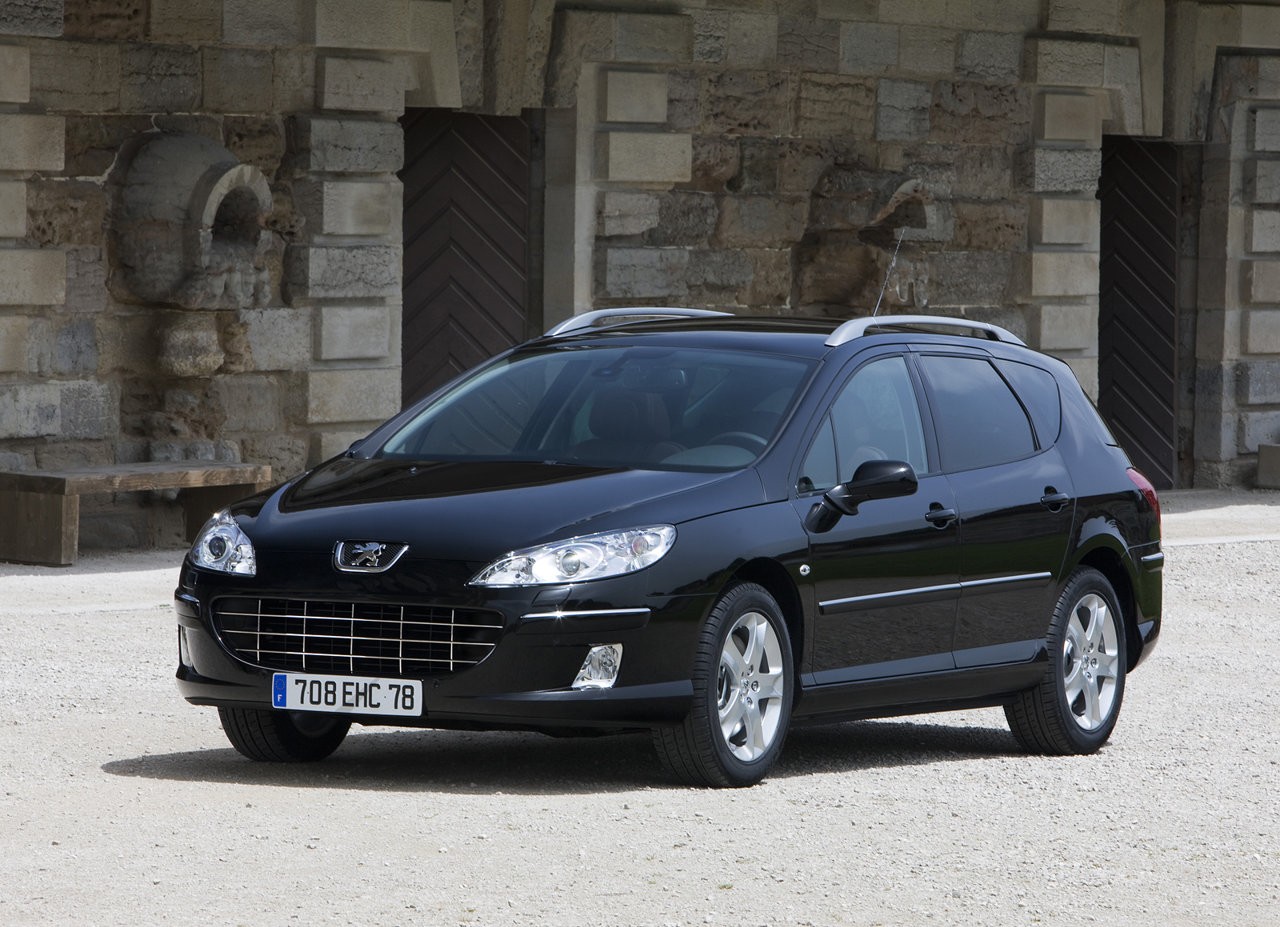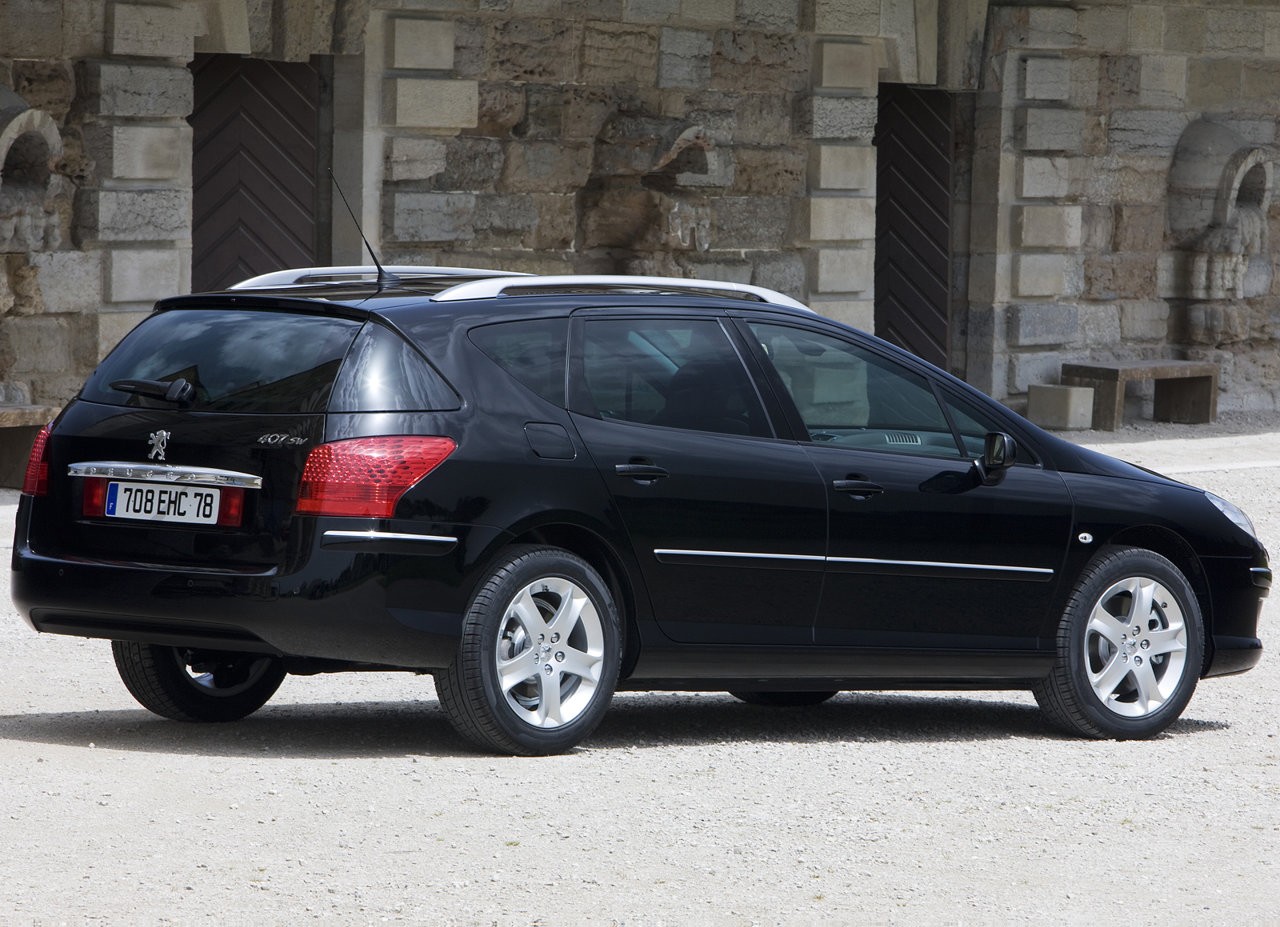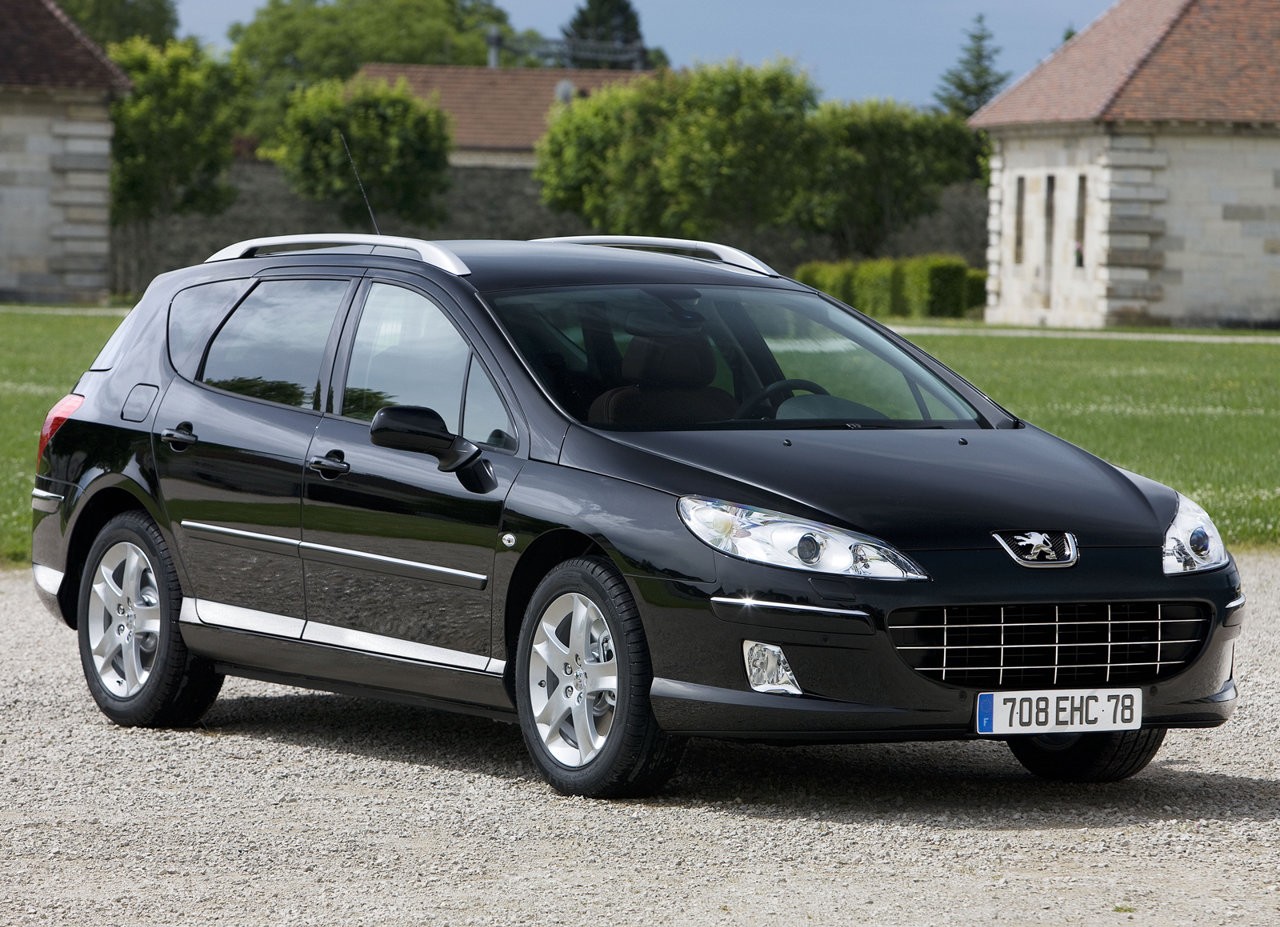
- Refined 2.9-litre V6 petrol engine
- Frugal turbo-diesel engines
- Comfortable front seats
- Spacious interior
- Well-weighted steering
- Soft suspension struggles to absorb bumps and makes for poor dynamics
- With electronically controlled dampers, normal mode is underdamped and sport mode lacks compliance
- For 407 SV, automatic transmission reluctant to kickdown
- For diesel engines, turbo lag
Review: Peugeot D2.I 407 sedan and wagon (2004-09)
Overview
Released in September 2004, the Peugeot D2 Phase I (D2.I) 407 was available as a mid-size sedan or ‘Touring’ wagon (the 407 Coupe has been reviewed separately). Manufactured in Rennes, France, the front-wheel drive 407 was available with four different engines and in SR, ST and SV editions, while Executive, Comfort and Sport badged models were also offered.
Engines
Of the engines:
- The 2.0-litre DW10 diesel engines had common-rail direct injection, a Garrett variable geometry turbocharger, an air-to-air intercooler; double overhead camshafts, four valves per cylinder and a compression ratio of 18.0:1;
- The 2.2-litre EW12 four-cylinder petrol engines had double overhead camshafts and four valves per cylinder and a compression ratio of 10.8:1;
- The 2.9-litre ES9 V6 petrol engines had aluminium construction, double overhead camshafts, four valves per cylinder, variable valve timing for the intake camshafts and a compression ratio of 10.5:1; and,
- From 2007, the 2.7-litre DT17 turbo-diesel engines were offered. These engines had a compacted graphite iron (CGI) block, high-pressure common-rail direct injection, twin turbochargers with an air-to-air intercooler, double overhead camshafts, four valves per cylinder and a compression ratio of 18.0:1.
Dimensions
Compared to the Peugeot 406 , the 407 sedan and Touring were 78 mm longer (at 4676 mm), 46 mm wider (1811 mm), 35 mm taller (1447 mm) and had 117 mm longer wheelbases (2725 mm). According to Peugeot, the 407 sedan had drag coefficient of 0.29 Cd and a torsional rigidity of 0.77 milliradians (mrad).
Suspension and steering
The Peugeot 407 had electrohydraulic, rack-and-pinion steering; for the 407 SV, the level of power steering assistance was adjusted according to vehicle speed, engine speed, turning angle and steering wheel rotational speed.
The Peugeot 407 had double wishbone front suspension and multi-link independent rear suspension. For the 407 SV, the suspension included electronically-controlled dampers with nine individual settings, while a push-button enabled the driver to engage a ‘sport’ mode that provided ‘reinforcement’ of the variable damping for greater firmness.
| Body | Variant | Edition | Badge | Engine | Trans. | Years | Power | Torque |
|---|---|---|---|---|---|---|---|---|
| Sedan | 2.0 HDi | SR | N/A | 2.0-litre turbo-diesel I4 | 6sp man. | 2006-09 | 100 kW at 4000 rpm | 320 Nm at 2000 rpm |
| Sedan, Tour-ing |
2.0 HDi | ST | Execu-tive, Comfort |
2.0-litre turbo-diesel I4 | 4sp auto, 6sp man. |
2004-06 | 100 kW at 4000 rpm | 320 Nm at 2000 rpm |
| 6sp auto | 2006 | |||||||
| 2.0 HDi | ST | N/A | 2.0-litre turbo-diesel I4 | 6sp auto, 6sp man. |
2007-09 | 100 kW at 4000 rpm | 320 Nm at 2000 rpm | |
| 2.7 HDi | SV | N/A | 2.7-litre twin turbo-diesel V6 | 6sp auto | 2007-09 | 150 kW at 4000 rpm | 440 Nm at 1900 rpm | |
| 2.2i | ST | Execu-tive, Comfort |
2.2-litre petrol I4 | 4sp auto, 6sp man. |
2004-06 | 116 kW at 5650 rpm | 217 Nm at 3900 rpm | |
| 2.2i | ST | N/A | 2.2-litre petrol I4 | 4sp auto | 2007-09 | 116 kW at 5650 rpm | 217 Nm at 3900 rpm | |
| ST | N/A | 6sp man. | 2007-08 | |||||
| 2.9i V6 | SV | Sport, Execu-tive |
2.9-litre petrol V6 | 6sp auto | 2004-06 | 155 kW at 6000 rpm | 290 Nm at 3750 rpm | |
| 2.9i V6 | SV | N/A | 2007-09 |
Safety equipment
Standard safety equipment for the Peugeot 407 included dual front airbags, front side airbags, full-length curtain airbags (i.e. for front and second rows), ABS, brake assist, electronic brake force distribution, electronic stability control, traction control, active front seat head restraints, front seatbelt pretensioners and seatbelt load limiters for the front and outer rear seats.
Euro NCAP crash testing
In Euro NCAP crash testing , a 2004 407 sedan with a 2.0-litre turbo-diesel engine – and equipped with a driver’s knee airbag (not available in Australia) – received a five star adult occupant protection rating with a score of 33.66 out of 37. In the frontal offset impact test, the knee airbag was very effective and a slight risk of serious lower leg injury for the driver was recorded. In the side impact test, there was a slight risk of serious chest and abdomen injury.
Features
Standard features for the Peugeot 407 included 17-inch alloy wheels, a six speaker Clarion sound system with a CD player, climate control air conditioning, velour upholstery, cruise control, front fog lights, automatic headlights, rain-sensing wipers, rear parking sensors, steering wheel audio controls, remote central locking, power windows and heated mirrors, a height and reach adjustable steering wheel, integrated rear and rear side sun blinds, a trip computer and immobiliser; Touring models were also fitted with a panoramic glass roof and split-folding rear tail-gate.
The 407 SV was further equipped with an eight speaker JBL sound system, a six-stack CD player, leather seats, power adjustable and heated front seats, xenon headlights and electronically-variable suspension dampers.
Peugeot 407 2.7 HDi SV
Released in July 2006, the 2.7 HDi SV was distinguished from its 2.9-litre petrol V6 counterpart by its 18-inch alloy wheels, chrome grille, body-coloured side protection strips, coupe-style leather steering wheel and interior faux alloy highlights.
Brochure
Review: Peugeot D2.II 407 sedan and wagon (2009-11)
Overview
Released in June 2009, the D2 Phase II (D2.II) 407 introduced a revised line-up and minor cosmetic updates. Visually, the D2.II 407 could be identified by its redesigned air intake, curved grille with a triple row of horizontal chrome bars crossed by a vertical chrome bar, body-coloured side protection mouldings with chrome bead finish, rear diffuser and redesigned rear tail-lights with ruby red housing and crystal white finish for reversing lights. Inside, there were new rotary buttons and circular controls on the air conditioning, with chrome surrounds for the sound system controls.
| Body | Variant | Edition | Engine | Trans. | Peak power | Peak torque |
|---|---|---|---|---|---|---|
| Sedan | 2.0 HDi | SR, ST |
2.0-litre turbo-diesel I4 | 6sp man. | 103 kW at 4000 rpm | 320 Nm at 2000 rpm |
| 6sp auto | 100 kW at 4000 rpm | 320 Nm at 2000 rpm | ||||
| 2.7 HDi | SV | 2.7-litre twin-turbo-diesel V6 | 6sp auto | 150 kW at 4000 rpm | 440 Nm at 1900 rpm | |
| Wagon | 2.0 HDi | ST | 2.0-litre turbo-diesel I4 | 6sp auto | 100 kW at 4000 rpm | 320 Nm at 2000 rpm |
| 2.7 HDi | SV | 2.7-litre twin-turbo-diesel V6 | 6sp auto | 150 kW at 4000 rpm | 440 Nm at 1900 rpm |
Features
Compared to its D2.I predecessor, standard features for the D2.II 407 were largely unchanged, though the ST was editions were fitted with front parking sensors and a piano-black pearlescent finish for the centre console, air vent surrounds, door handles and door trim.
Specifications
- Specifications: Peugeot D2.II 407 (July 2009)
- Specifications: Peugeot D2.II 407 (July 2010)
- Wikipedia.org: Peugeot 407
